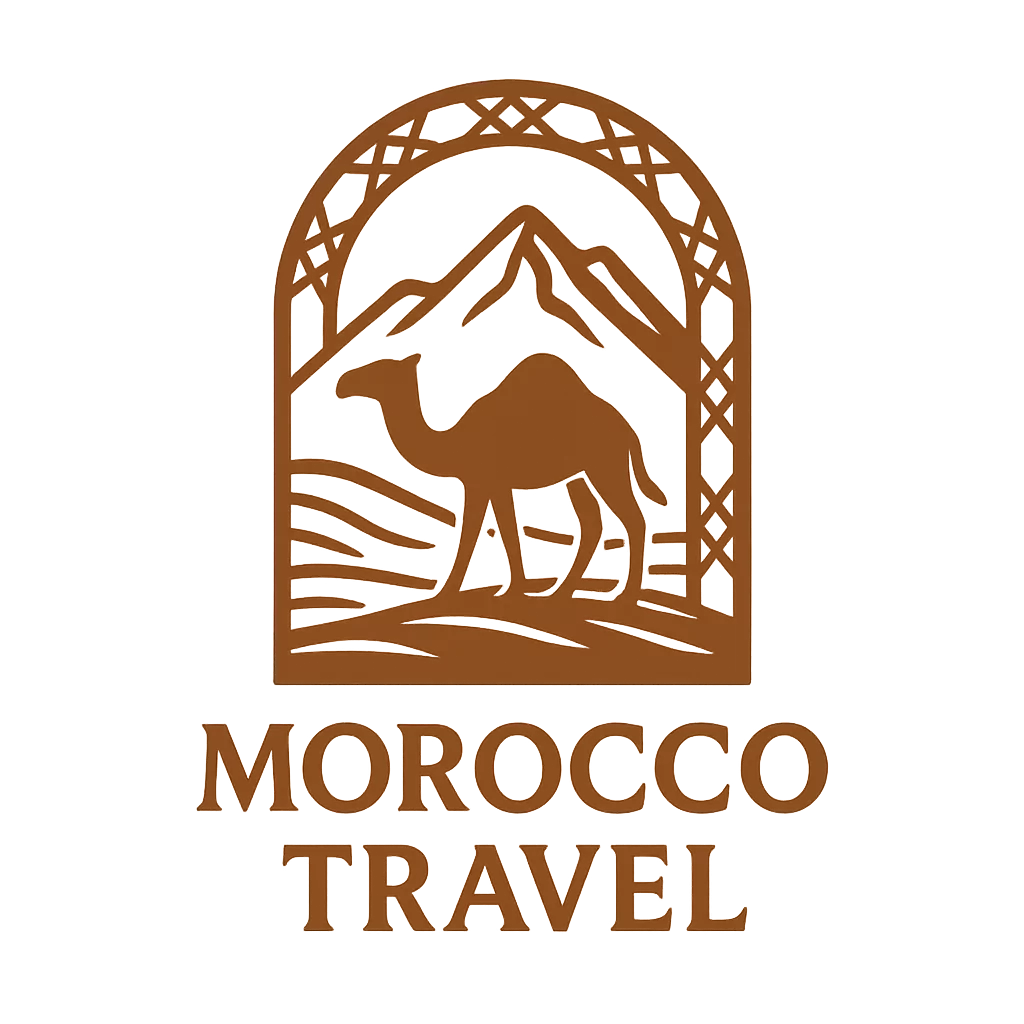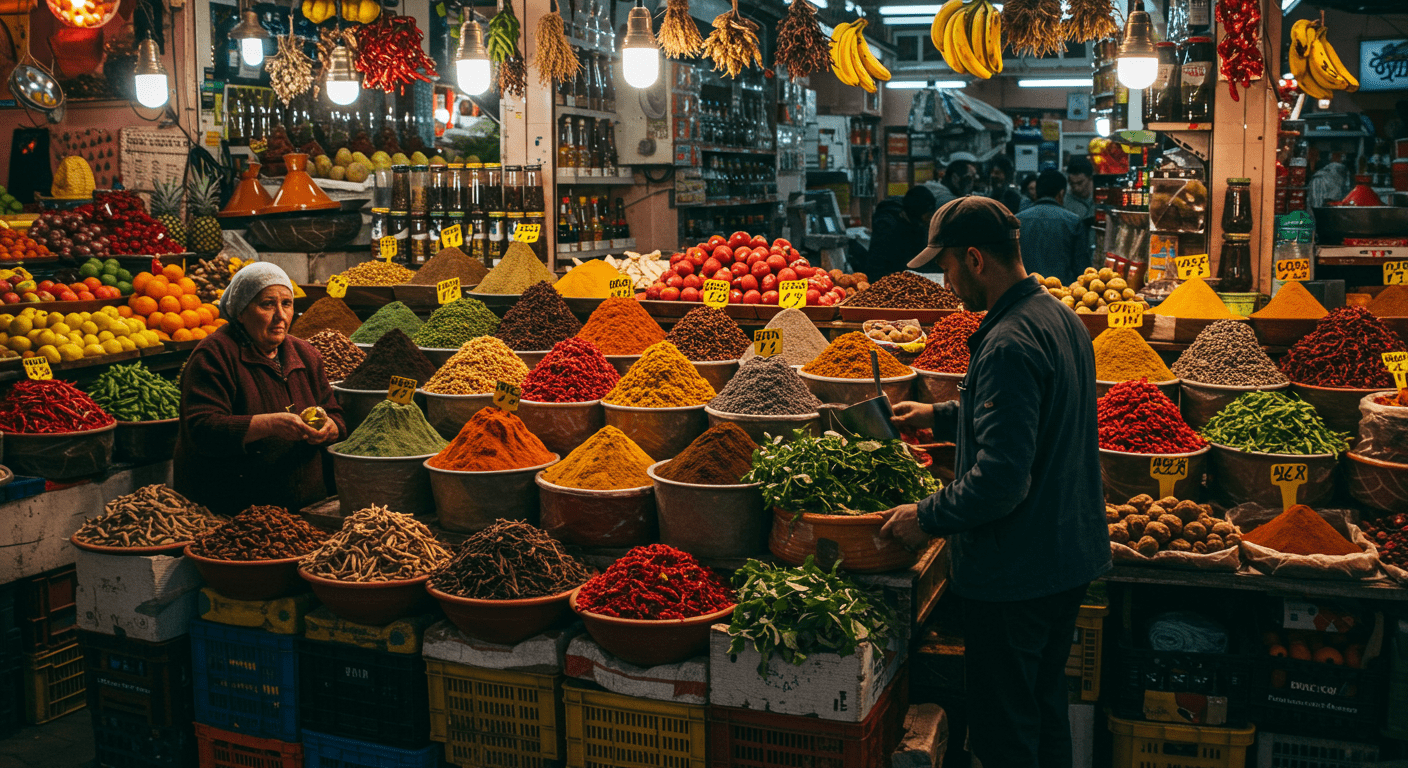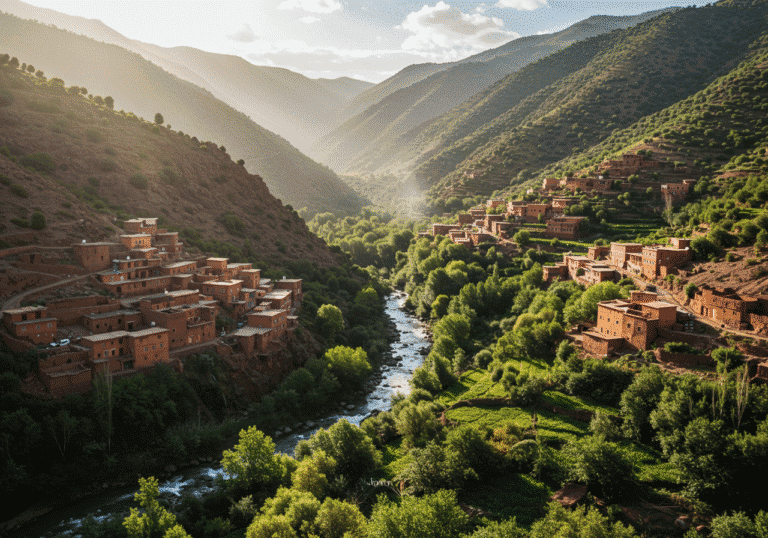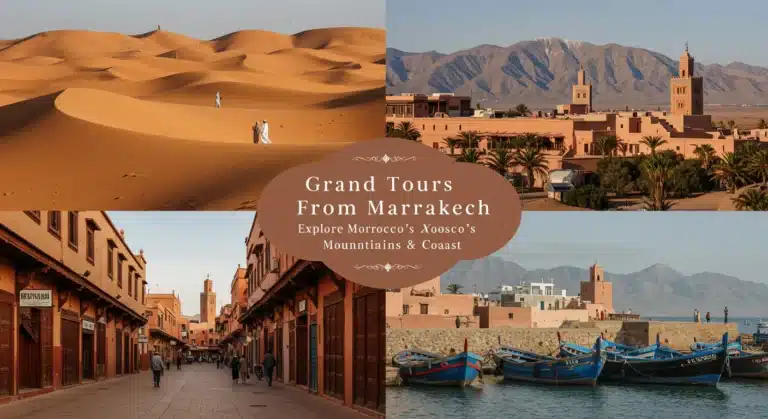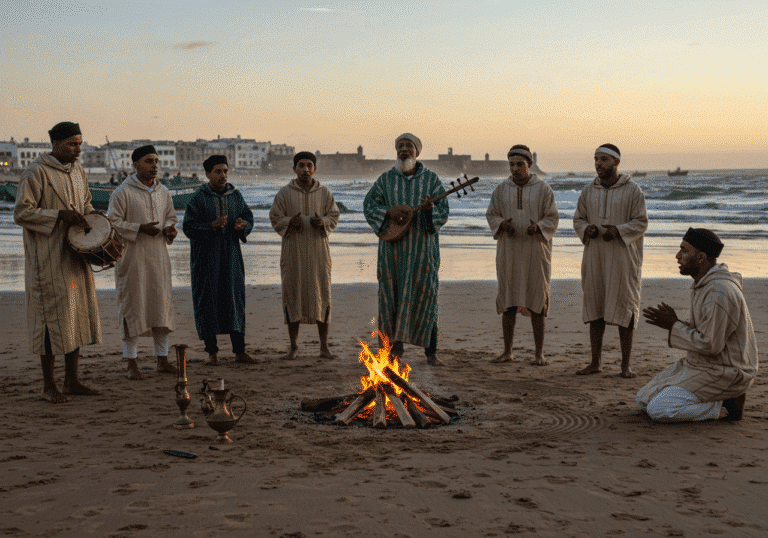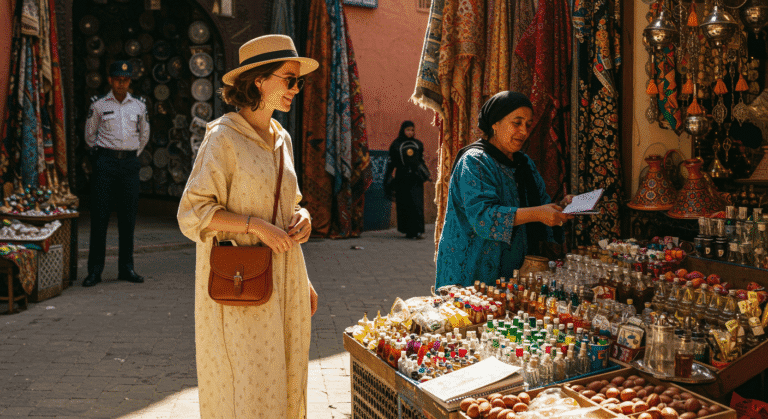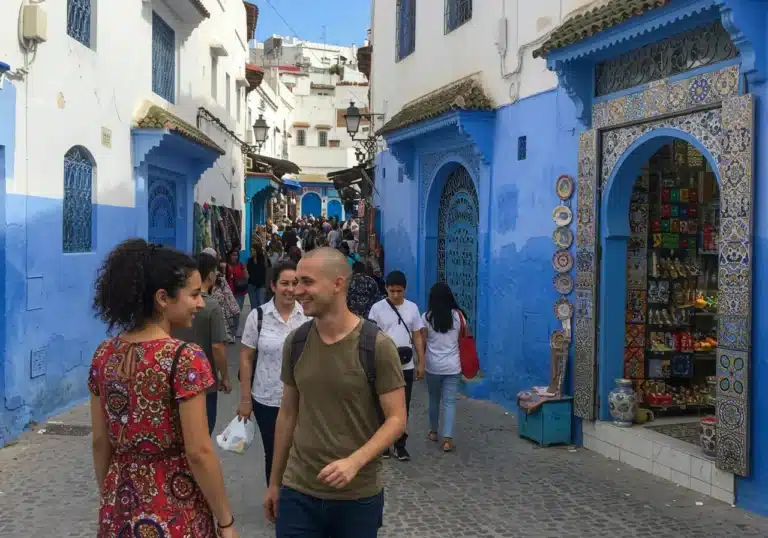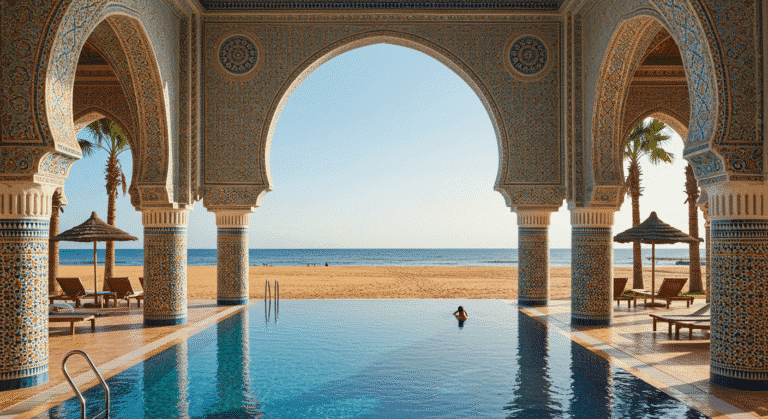Marrakech Food Markets: A Culinary Journey
A Sensory Feast Awaits
Did you know that Marrakech food markets host over 100 different spice varieties, yet most visitors sample less than 10 during their visit? This vibrant Moroccan city, with its labyrinthine medina and bustling souks, offers one of the most authentic culinary experiences in North Africa. Exploring Marrakech’s food markets isn’t just about tasting food; it’s about immersing yourself in centuries of cultural heritage expressed through flavors, aromas, and cooking techniques passed down through generations. From the iconic Jemaa el-Fnaa square that transforms into a massive open-air dining hall each evening to the specialized food souks hidden throughout the medina, Marrakech’s food markets provide a sensory journey unlike any other destination.
Travel Checklist: Preparing for Your Culinary Adventure
Before embarking on your flavorful exploration of Marrakech’s food markets, ensure you pack these essentials:
- Comfortable walking shoes: You’ll traverse countless narrow alleys and cobblestone paths
- Lightweight, modest clothing: Respect local customs while staying cool in the Moroccan heat
- Small denominations of Moroccan dirhams: Street food vendors rarely accept cards
- Reusable water bottle: Stay hydrated while reducing plastic waste
- Portable hand sanitizer: Not all food stalls offer washing facilities
- Small backpack: Keep your hands free for sampling delicacies
- Arabic food vocabulary card: Learn terms like “harira” (traditional soup) and “b’stilla” (savory-sweet pastry)
- Digestive aids: New spices and flavors might challenge sensitive stomachs
- Smartphone with good camera: Document colorful spice mountains and food presentations
Pro Tip: Bring a small insulated bag if you plan to purchase perishable items like fresh olives or soft cheeses from the markets to enjoy later at your accommodation.
Best Time to Visit Marrakech’s Food Markets
The optimal time to explore Marrakech’s food markets depends on your priorities:
For Comfortable Weather and Moderate Crowds: March to May and September to November offer pleasant temperatures (70-85°F/21-29°C) with 40% fewer tourists than peak summer months.
For Authentic Ramadan Food Experiences: The holy month of Ramadan (dates vary annually) transforms the markets with special seasonal treats and evening food festivities. Food stalls open later but offer exceptional traditional dishes.
For Harvest Bounty: September to November brings fresh date harvests, pomegranates, and citrus fruits to the markets, with produce prices approximately 25% lower than other seasons.
For Budget-Conscious Travelers: November to February (excluding holiday weeks) sees hotel rates drop by up to 30% while food markets remain fully operational.
Data Insight: Morning markets (8-10 AM) have the freshest produce with 60% fewer tourists than afternoon hours, while evening markets (after 6 PM) offer the widest variety of prepared foods.
Your Journey Through Marrakech’s Food Markets
Day 1: Jemaa el-Fnaa and Surrounding Souks
Begin your culinary adventure at Marrakech’s beating heart: Jemaa el-Fnaa square. By day, sample fresh-squeezed orange juice from numerous vendors (compare prices; corner stalls often charge less). As sunset approaches, witness the square’s transformation as over 100 food stalls materialize, creating what locals call “Restaurant Row.”
Morning Route: Start at the northern edge of Jemaa el-Fnaa around 10 AM, when crowds are thinner but vendors are fully set up. Sample classic Moroccan breakfast items:
- Fresh beghrir (honeycomb pancakes) drizzled with honey
- Msemen (square-folded pancakes) with olive oil and mint tea
Afternoon Exploration: Venture into the specialized food souks branching off from the main square:
- Souk Ableuh: Known for its olives, preserved lemons, and pickled vegetables
- Souk Smata: The spice market with towering pyramids of colorful seasonings
- Rahba Kedima (Old Spice Square): Home to medicinal herbs, spice blends, and natural remedies
Evening Experience: Return to Jemaa el-Fnaa around 6 PM to witness the evening transformation. Look for stall number 32, where third-generation cook Ahmed serves the city’s most renowned lamb tangia, slow-cooked in underground ovens for 8+ hours.
Day 2: Local Markets Beyond the Tourist Trail
Venture beyond the main tourist areas to discover where Marrakech residents actually shop.
Morning: Visit Marché Central (Central Market) on Avenue Mohammed V, opening at 8 AM. This covered market features:
- The freshest seafood selection in the inland city
- Locally-produced honeys with distinct flavor profiles based on regional flowers
- Artisanal cheeses including jibneh and raib (similar to fresh ricotta)
Midday: Explore Mellah Spice Market in the historic Jewish quarter:
- Prices here average 30% lower than in tourist-focused areas
- Find rare spice blends like ras el hanout with up to 27 different ingredients
- Participate in a 30-minute spice workshop with vendor Mustafa, who explains culinary and medicinal uses
Afternoon: Discover Bab Doukkala Market, a primarily local food market:
- Watch khobz (traditional bread) being shaped and baked in community ovens
- Try sardine kefta, a Marrakech specialty rarely found in tourist establishments
- Purchase farm-fresh produce directly from Berber farmers who travel from the Atlas Mountains
Day 3: Specialty Food Experiences and Modern Markets
Morning: Visit Souk el Attarine, specializing in fruits, nuts, and sweet treats:
- Sample dried figs stuffed with almonds and anise
- Try chebakia, sesame-based honey-soaked pastries
- Purchase amlou, a decadent argan oil, almond, and honey spread
Afternoon: Explore Gueliz, the “New City,” for a contrast to traditional markets:
- Visit Marché Solidaire, a women’s cooperative selling preserved foods and pastries
- Stop at Grand Café de la Poste for a taste of French-Moroccan fusion with local ingredients
- Explore the Carré Eden shopping center for high-end Moroccan food products and spices in contemporary packaging
Budget Breakdown for Marrakech’s Food Markets
Understanding the costs associated with exploring Marrakech’s food markets will help you plan effectively:
Market Food Expenses (per person per day):
- Budget Experience: 100-150 MAD ($10-15 USD)
- Mid-range Experience: 200-300 MAD ($20-30 USD)
- Luxury Experience: 400+ MAD ($40+ USD)
Specific Food Costs:
- Fresh orange juice: 4-10 MAD ($0.40-1)
- Traditional tagine at market stall: 30-50 MAD ($3-5)
- Evening meal at Jemaa el-Fnaa: 50-80 MAD ($5-8)
- Cooking class with market tour: 350-700 MAD ($35-70)
- Guided food tour: 500-900 MAD ($50-90)
Money-Saving Tips:
- Breakfast at markets costs 60% less than hotel breakfasts
- Prices decrease approximately 25% when you venture just two streets beyond main tourist areas
- Many vendors offer free samples; try before purchasing
- Prices become more negotiable after 7 PM as vendors prepare to close
- Buying spices in bulk (50g+) typically earns a 15-30% discount
Sustainable and Inclusive Market Experiences
Eco-Friendly Market Exploration
- Join a zero-waste food tour that provides reusable containers for samples
- Visit Terre d’Eveil organic market (Saturdays only) for sustainably-grown produce
- Support vendors using traditional palm leaf or ceramic packaging instead of plastic
- Purchase locally-made market baskets from women’s cooperatives near Bab Doukkala
Inclusive Options for Different Travelers
For Families: Morning markets are less crowded and more accommodating for children. Many vendors offer child-sized portions upon request. The storytellers in Jemaa el-Fnaa (though mostly in Arabic) provide cultural entertainment between food stops.
For Solo Travelers: Evening food tours provide safety and camaraderie while navigating night markets. Communal tables at Jemaa el-Fnaa food stalls encourage conversation with locals and fellow travelers.
For Travelers with Dietary Restrictions:
- Vegetarians: Seek out zaalouk (eggplant salad), taktouka (pepper salad), and vegetable tagines
- Gluten-Free: Look for tagines, grilled meats, and salads (avoid couscous and bread)
- Halal: All traditional Moroccan food markets serve exclusively halal options
For Mobility-Limited Travelers: Marrakech Food Tours offers customized routes avoiding narrow alleyways and steps. Newer markets in Gueliz have improved accessibility.
Food & Dining Suggestions: Must-Try Market Delicacies
Marrakech’s food markets offer countless culinary discoveries. Focus on these exceptional experiences:
Morning Market Delights:
- B’ssara: Creamy fava bean soup served with olive oil, cumin, and bread at Bab Doukkala market
- Sfenj: Moroccan donuts made fresh throughout the morning at small stalls throughout the medina
Midday Favorites:
- Mechoui: Slow-roasted lamb from the specialized mechoui alley near Souk Ableuh
- Tangia: Marrakech’s signature dish of meat slow-cooked with preserved lemon and spices in ceramic urns
Evening Specialties:
- Snail Soup: Medicinal and flavorful, served in small bowls at Jemaa el-Fnaa
- Sheep’s Head: For adventurous eaters, try this local delicacy at stalls displaying full heads
Sweet Treats:
- Ghoriba: Shortbread cookies made with almond flour found in bakery sections of every market
- Kaab el Ghazal: “Gazelle horns” crescent-shaped pastries filled with almond paste and orange blossom
Personal Recommendation: Visit Café Clock in the Kasbah area for their contemporary twist on camel burger, using traditional Moroccan spices purchased fresh from the markets each morning.
Common Mistakes to Avoid in Marrakech’s Food Markets
Navigate Marrakech’s food markets like a seasoned traveler by avoiding these common pitfalls:
Eating at Empty Stalls: Local wisdom suggests following crowds. Busy stalls have faster turnover, ensuring fresher food. Empty stalls might indicate food has been sitting out too long.
Overlooking Hand Hygiene: Only 40% of market stalls provide handwashing facilities. Bring hand sanitizer or wet wipes, especially before eating finger foods.
Drinking Tap Water: Stick to bottled water or hot beverages. Avoid drinks with ice cubes unless at established restaurants.
Overpaying Without Negotiation: Prices for goods in markets (including spices and preserved foods) should be negotiated. Expect to pay 60-70% of the initial asking price.
Cultural Faux Pas: Eating with your left hand is considered unclean. Photograph vendors only after asking permission or purchasing something.
Linguistic Confusion: Many vendors speak limited English. Learn basic food terms in Arabic or French, or save photos of dishes you want to try.
Time Management Errors: Don’t rush through markets. Allow 3-4 hours to properly explore each major market area. Many visitors mistakenly try to see everything in a single day.
Safety & Travel Tips for Marrakech’s Food Market Adventures
Market Navigation Safety:
- Keep valuables in front pockets or hidden money belts
- Be cautious of “helpful” guides offering to lead you to “special” markets; official guides carry identification
- Stay hydrated but pace yourself with new foods
- Streets around Jemaa el-Fnaa are well-lit until midnight; beyond requires extra caution
- Police tourist assistance booths are located at major market entrances
Food Safety Tips:
- Cooked food is generally safer than raw
- Meat should be thoroughly cooked and served hot
- Peelable fruits are safer options for sensitive stomachs
- Morning meals typically use the freshest ingredients
Practical Advice:
- Download offline maps as medina alleyways often confuse GPS
- Purchase a Maroc Telecom SIM card (approximately 50 MAD/$5) for data access
- Use “La Maison Arabe” riad as a landmark reference point near major food souks
- Jemaa el-Fnaa food stalls use number systems; note your favorites for return visits
- Most market areas close by 8 PM except Jemaa el-Fnaa, which operates until midnight
Insurance & Health:
- Confirm your travel insurance covers foodborne illness
- Locate Pharmacy Ibn Tofail near Jemaa el-Fnaa for digestive remedies
- International Medical Center of Marrakech accepts major insurance for emergencies
A Culinary Tapestry Woven Through Generations
Marrakech’s food markets offer far more than sustenance; they provide a living museum of Moroccan cultural heritage. From sunrise bread baking to midnight grilled meats, each market tells stories of Arabian, Berber, Jewish, and French influences that have shaped this unique cuisine. The symphony of sizzling tagines, fragrant spices, and merchant calls creates memories that linger long after your journey ends. Whether you’re sampling snail soup under the stars at Jemaa el-Fnaa or haggling for saffron in hidden spice souks, Marrakech nourishes both body and soul.
Have you explored Marrakech’s food markets or do you dream of visiting? Share your experiences or questions below! Subscribe to our newsletter for more in-depth guides to the world’s most fascinating culinary destinations.
FAQs About Marrakech’s Food Markets
Is it safe to eat street food in Marrakech?
Generally yes, if you follow basic precautions. Choose busy stalls with high turnover, ensure meat is thoroughly cooked, and avoid raw vegetables unless properly peeled. Approximately 90% of visitors enjoy street food without issues. Drink only bottled water and avoid ice in drinks.
What are the operating hours for Marrakech’s food markets?
Most traditional food souks operate from approximately 8:30 AM until 7:00 PM, with some variation seasonally. Jemaa el-Fnaa food stalls begin setting up around 5:00 PM and operate until midnight. During Ramadan, hours shift significantly with markets closing during daylight hours and becoming exceptionally vibrant after sundown.
Do I need a guide to explore the food markets?
Not necessarily, though first-time visitors often benefit from guided tours, especially for evening market experiences. Self-guided exploration is entirely possible with a good map. Food-specific tours (ranging from 350-900 MAD) provide cultural context and insider access to vendors.
What should I wear when visiting Marrakech’s food markets?
Modest, comfortable clothing showing respect for local customs is ideal. For women, shoulders and knees should be covered. Lightweight fabrics help manage heat while comfortable walking shoes are essential for navigating uneven surfaces. Avoid valuable jewelry or accessories that might attract unwanted attention.
How much bargaining is appropriate at food markets?
For prepared foods and meals, prices are generally fixed. For spices, preserved foods, and specialty items, gentle negotiation is expected. Begin by offering approximately 60% of the asking price and expect to meet in the middle. Bargaining should maintain a friendly, respectful tone rather than aggressive haggling.
Can I find vegetarian/vegan options in Marrakech’s food markets?
Absolutely! Traditional Moroccan cuisine includes numerous plant-based dishes. Look for zaalouk (eggplant salad), taktouka (pepper salad), loubia (white bean stew), vegetable tagines, and assorted salads. Communicate dietary restrictions clearly, as animal fats or broths may be used in seemingly vegetarian dishes.
What is the most unique food experience in Marrakech’s markets?
The tanjia experience is distinctly Marrakeshi. This slow-cooked meat dish is prepared in clay urns, sealed, and buried in hot ashes at traditional hammam bath houses. Visit Mechoui Alley near the spice souks to taste this authentic specialty rarely found outside Marrakech.
How can I learn more about Moroccan cooking and ingredients?
Several cooking schools offer half-day programs including market tours and hands-on preparation. La Maison Arabe and Souk Cuisine are highly rated options, with courses ranging from 600-1200 MAD. These classes typically include shopping for ingredients, preparation techniques, cultural context, and enjoying your creations.
